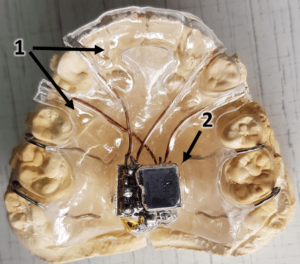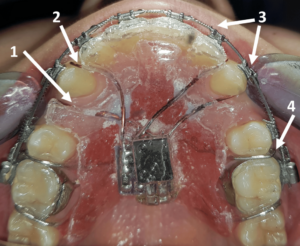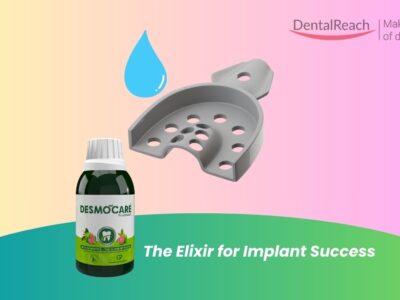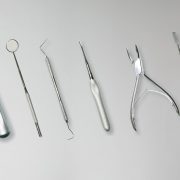Orthodontic treatment is often a lengthy process, with traditional canine retraction taking months or even years. However, researchers at Damascus University have introduced a novel intraoral electromotor device that uses low-amperage direct current (DC) stimulation to accelerate tooth movement significantly. Their pilot study demonstrates that this technology could reduce the duration of orthodontic treatment by approximately 30%, offering a faster, more patient-friendly solution.
The study involved seven patients diagnosed with class II, division I malocclusion, all undergoing maxillary canine retraction following the extraction of both upper first premolars. Each patient wore the device for five hours daily, delivering a controlled electrical current of 5–20 μA. The stimulation was applied using a compact, user-friendly removable device secured to the posterior teeth with retention clasps. The device delivered the current across the palatal gingiva around the upper canines, enhancing bone metabolism and accelerating tooth movement.
Over the three-month observation period, the mean canine retraction rate was 1.25 ± 0.13 mm/month—a notable increase compared to traditional methods, which typically achieve rates of 0.83 to 0.95 mm/month. This acceleration equates to a 22% to 33% reduction in treatment time, a significant advantage for both patients and clinicians.

Figure 1: After extending the acrylic layer, the circuit, battery and electrodes are placed in their appropriate places
1: Circuit board, 2: acrylic base plate, 3: retention clasps, 4: electrodes carrying the electric current, 5: charging port
Importantly, the study reported no adverse effects from the electrical stimulation. Patients experienced no burning, irritation, or discomfort, and all participants expressed a willingness to recommend the procedure. The device’s ease of use and tolerability contributed to its high patient acceptance, with only one patient reporting moderate difficulty adapting.

Figure 2: A thin vacuum layer is applied over the device elements to ensure proper fit and insulation
1: The vacuum-formed layer of thermoplastic material above the acrylic base plate, and 2: the insulated circuit and battery

Figure 3: Intraoral application of the device
The patient is asked to wear the appliance for five hours daily
1: The trimmed area of the acrylic base plate to provide a space for canine retraction (about 2 mm); 2: the electrodes inserted into their places; 3: the fixed orthodontic appliance (the braces and the archwire); 4: the activated retention clasps to ensure stability
The study’s findings suggest that low-amperage DC stimulation could revolutionize orthodontic treatment by providing a safe, effective method for accelerating canine retraction. However, the authors note that larger-scale studies with control groups are necessary to validate these promising results.
If further clinical trials confirm its efficacy, this innovative electrical stimulation technique could become a game-changer in orthodontics, offering shorter treatment times and improved patient satisfaction.
Reference: Kheshfeh M, Hajeer M, Burhan A, et al. (March 14, 2025) An Innovative Approach to Accelerate Maxillary Canine Retraction With Low-Amperage Direct Electric Current: A Preliminary Clinical Study. Cureus 17(3): e80573. doi:10.7759/cureus.80573




















Comments